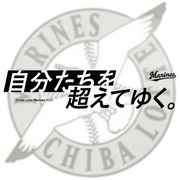アメリカのヘラルドトリビューン紙に取り上げられた記事です。
On Japanese streets, denim artisans are walking the walk
By Kaori Shoji International Herald Tribune
Published: October 2, 2006
TOKYO In Japan, jeans can talk. They wax eloquent on the poetry of hand- dyed, hand-stitched denim. They lecture on the pros and cons of cotton or acrylic threads, sculpted or plain rivets.
They speak of the designer who probably sacrificed sleep and sanity to create one perfect pair with a tapered leg and a low-rise cut that fits just so. Most important, they pipe up about the wearer, his or her particular sense of aesthetics and economics, their standards of romance.
For style-obsessed Japanese who have the cash, a favorite pair of jeans is ultimately the most important item in a closet, surpassing the Fendi suit or the cashmere sweater from Prada. Brands may come and go but jeans are forever, and they are very, very personal. They will adorn you but they won't disguise you, and they will surely reveal secrets of your innermost soul.
Such are some of the myths that have moved the quest for the perfect pair of jeans to religious heights. To call this search "shopping" would be a grave inaccuracy. The better phrase for these people is more like "mission from god."
So the Japanese denim lover is delving deeper into the fringes of the jeans world. The craze continues for True Religion and Earnest Sewn, for instance, but the real thrill now comes in discovering obscure brands created by monkish denim artisans.
Take the legendary Kato Jeans designed by Hiroshi Kato, who draws all his ideas in a sketchbook and takes them to a tiny downtown factory. He then sits down with the supervisor to give minute instructions on exactly what he is aiming for.
Kato Jeans is based in Kyoto and only a handful of shops carry its pants because Kato has chosen not to enlarge or complicate his operation. A former textile consultant, he takes no short cuts. A pair of Kato Jeans is hand-crafted and marvelously detailed - even the thread on the pockets is dyed to his specifications. He strives for a cut that makes Japanese legs look longer and blends the cotton to accommodate the wilting heat of Japanese summers.
Retailing at 19,800 to 23,000 yen, or about $170 to $195, Kato Jeans are pricey but worth it, says one fan, Jun Yamada. "I had always hated the sight of myself in jeans," he said, "My legs were too short and stumpy."
Kato solved Yamada's problem. "I would look in the mirror and recoil in horror," he said, "But in a pair of Kato I've learned to actually like my body. This is more than a clothing item."
Mizra, also manufactured in Kyoto, combines craftsmanship, eco-friendliness and retro-Japanese motifs. The brand's designer, Yoshiyuki Iwagishi, says that the process of creation is more important than anything else and that "torturing and killing" himself over a silhouette or a particular fit is second nature.
Mizra jeans are distinguished by a slim, elegant leg line; the antique kimono fragments used on the pockets and hems; and Iwagishi's use of traditional Japanese dyes, made from soy beans and wood charcoal, for example. No two Mizra jeans are the same because every pair is finished by hand.
After Kyoto, hard-core denim fans head west to Okayama Prefecture, the official pilgrimage site for artisanal jeans lovers.
Long known for its dye and indigo industry, Okayama is home to more than 100 family-owned factories that serve Japan's designers and such European brands like Dior Homme and Dolce and Gabbana.
Most Japanese jeans designers swear by Okayama indigo: a deep, ocean-blue shade. Most of the work in these factories is still done by hand and follow methods that are centuries-old.
Kapital started out in Okayama in 1995 and is now said to have the truest, deepest shade of blue, with understated designs that fashion critics say show a reverence for denim.
For the Japanese, denim carries a romantic subtext. No one had seen a pair of jeans until American soldiers brought them in at the end of World War II in 1945. They became a metaphor for rebelliousness, freedom, and liberation from the darkness and hunger of war.
In the 1950s, the diplomat and statesman Jiro Shirasu posed for a photo portrait in a pair of Levis and a white T- shirt. The Foreign Ministry was shocked but the fad set in. By the late 1960s Japanese jeans manufacturers like Edwin Co. were churning out jeans of every shape and color and now many young Japanese think that Edwin is an American brand like Levis.
These days, Japanese denim faithful will own one pair of a mainstream jeans company, one pair of a foreign brand and one pair stitched to perfection by a relatively unknown artisan/designer.
At a shop called Garage, meanwhile, things have evolved beyond the simple act of selling and buying. Garage is owned by a young couple who open the shop - which combines the store, the manufacturing room and the living quarters - only for several days a month. They did not want their names to be used, saying they prefer to remain inconspicuous and have the focus be the product.
Their jeans, called "Cracker," are displayed on the ground floor. People can come in and try them on but no one buys a thing until the wearer and the designer look long and hard at the mirror to decide whether a particular pair fits like a charm.
If anything is amiss, in the designer's eyes, the potential buyer is politely discouraged: Sorry, no deal. One customer described the experience: "It's like unrequited love. I'm heartbroken."
On Japanese streets, denim artisans are walking the walk
By Kaori Shoji International Herald Tribune
Published: October 2, 2006
TOKYO In Japan, jeans can talk. They wax eloquent on the poetry of hand- dyed, hand-stitched denim. They lecture on the pros and cons of cotton or acrylic threads, sculpted or plain rivets.
They speak of the designer who probably sacrificed sleep and sanity to create one perfect pair with a tapered leg and a low-rise cut that fits just so. Most important, they pipe up about the wearer, his or her particular sense of aesthetics and economics, their standards of romance.
For style-obsessed Japanese who have the cash, a favorite pair of jeans is ultimately the most important item in a closet, surpassing the Fendi suit or the cashmere sweater from Prada. Brands may come and go but jeans are forever, and they are very, very personal. They will adorn you but they won't disguise you, and they will surely reveal secrets of your innermost soul.
Such are some of the myths that have moved the quest for the perfect pair of jeans to religious heights. To call this search "shopping" would be a grave inaccuracy. The better phrase for these people is more like "mission from god."
So the Japanese denim lover is delving deeper into the fringes of the jeans world. The craze continues for True Religion and Earnest Sewn, for instance, but the real thrill now comes in discovering obscure brands created by monkish denim artisans.
Take the legendary Kato Jeans designed by Hiroshi Kato, who draws all his ideas in a sketchbook and takes them to a tiny downtown factory. He then sits down with the supervisor to give minute instructions on exactly what he is aiming for.
Kato Jeans is based in Kyoto and only a handful of shops carry its pants because Kato has chosen not to enlarge or complicate his operation. A former textile consultant, he takes no short cuts. A pair of Kato Jeans is hand-crafted and marvelously detailed - even the thread on the pockets is dyed to his specifications. He strives for a cut that makes Japanese legs look longer and blends the cotton to accommodate the wilting heat of Japanese summers.
Retailing at 19,800 to 23,000 yen, or about $170 to $195, Kato Jeans are pricey but worth it, says one fan, Jun Yamada. "I had always hated the sight of myself in jeans," he said, "My legs were too short and stumpy."
Kato solved Yamada's problem. "I would look in the mirror and recoil in horror," he said, "But in a pair of Kato I've learned to actually like my body. This is more than a clothing item."
Mizra, also manufactured in Kyoto, combines craftsmanship, eco-friendliness and retro-Japanese motifs. The brand's designer, Yoshiyuki Iwagishi, says that the process of creation is more important than anything else and that "torturing and killing" himself over a silhouette or a particular fit is second nature.
Mizra jeans are distinguished by a slim, elegant leg line; the antique kimono fragments used on the pockets and hems; and Iwagishi's use of traditional Japanese dyes, made from soy beans and wood charcoal, for example. No two Mizra jeans are the same because every pair is finished by hand.
After Kyoto, hard-core denim fans head west to Okayama Prefecture, the official pilgrimage site for artisanal jeans lovers.
Long known for its dye and indigo industry, Okayama is home to more than 100 family-owned factories that serve Japan's designers and such European brands like Dior Homme and Dolce and Gabbana.
Most Japanese jeans designers swear by Okayama indigo: a deep, ocean-blue shade. Most of the work in these factories is still done by hand and follow methods that are centuries-old.
Kapital started out in Okayama in 1995 and is now said to have the truest, deepest shade of blue, with understated designs that fashion critics say show a reverence for denim.
For the Japanese, denim carries a romantic subtext. No one had seen a pair of jeans until American soldiers brought them in at the end of World War II in 1945. They became a metaphor for rebelliousness, freedom, and liberation from the darkness and hunger of war.
In the 1950s, the diplomat and statesman Jiro Shirasu posed for a photo portrait in a pair of Levis and a white T- shirt. The Foreign Ministry was shocked but the fad set in. By the late 1960s Japanese jeans manufacturers like Edwin Co. were churning out jeans of every shape and color and now many young Japanese think that Edwin is an American brand like Levis.
These days, Japanese denim faithful will own one pair of a mainstream jeans company, one pair of a foreign brand and one pair stitched to perfection by a relatively unknown artisan/designer.
At a shop called Garage, meanwhile, things have evolved beyond the simple act of selling and buying. Garage is owned by a young couple who open the shop - which combines the store, the manufacturing room and the living quarters - only for several days a month. They did not want their names to be used, saying they prefer to remain inconspicuous and have the focus be the product.
Their jeans, called "Cracker," are displayed on the ground floor. People can come in and try them on but no one buys a thing until the wearer and the designer look long and hard at the mirror to decide whether a particular pair fits like a charm.
If anything is amiss, in the designer's eyes, the potential buyer is politely discouraged: Sorry, no deal. One customer described the experience: "It's like unrequited love. I'm heartbroken."
|
|
|
|
コメント(6)
>皆さん!
和訳こんな感じでーす!!
ジーンズは話すことができます。彼らは、手-染められた、手で縫われたデニムの詩の上で雄弁に話します。彼らは、綿またはアクリル糸(彫刻されたか質素なリベット)の賛否の講義をします。
彼らは、多分、先細の足で1つの完璧な一本をつくるために睡眠と分別を犠牲にしただろうデザイナーとちょうどそう合う低いカットについて話します。最も重要で、彼らは着用者、美学と経済状態の彼または彼女の特定の感覚、ロマンスの彼らの標準について話し出します。
現金を持っているスタイル取りつかれた日本人のために、大好きなジーンズは最後にクロゼットで最も重要なアイテムです。そして、プラダからフェンディ訴訟またはカシミアのセーターを凌ぎます。ブランドは行ったり来たりするかもしれません、しかし、ジーンズは長い時間です、そして、彼らはとっても個人的です。彼らはあなたを飾ります、しかし、彼らはあなたを偽りません、そして、彼らはきっとあなたの一番奥の魂の秘密を明かします。
それは、宗教的な高所に完全なジーンズの探索を動かした神話のいくらかです。この検索を「買い物」と言うことは、重大な不正確です。これらの人々のためのより良いフレーズは、より「神からの任務のようです。」日本のデニム愛好家がジーンズ界の周辺の中により深く調べているSo。たとえば、大流行はトゥルーReligionとアーネストSewnの間続きます、しかし、本当のスリルは現在、修道僧のデニム職人によってつくられるはっきりしないブランドを発見して入ります。
スケッチブックで全ての彼の考えを引っ張って、彼らを小さいダウンタウンの工場へ連れて行くかとうひろしによって設計される伝説的な加藤ジーンズを連れて行ってください。彼は、それから、正確に彼が何を目指しているかという分指示をするために、監督と座ります。
加藤ジーンズは京都に拠点を置きます、そして、加藤が彼の活動を大きくしないか、難しくしないほうを選んだので、少数の店だけはそのパンツを運びます。元織物コンサルタント、彼は近道をとりません。一対の加藤ジーンズは手作りされて、驚くほど特派されます - ポケットの上の糸さえ、彼の仕様に染められます。彼は、日本の足をより長く見えさせて、日本の夏の弱っている熱に対応するために綿を混合するカットのために努力します。
19,800〜23,000円または、およそ170ドル〜195ドル、加藤ジーンズの小売業は高価であるが、それの価値があります、1人のファン(山田淳)を言います。「私は、ジーンズをはいて私自身の光景を常に憎みました」、彼は言いました、「私の足はあまりに短くて、ずんぐりしていました。」、加藤は山田の問題を解決しました。「私は鏡をのぞいて、恐怖でひるみます」、と、彼が言いました。「しかし、一対の加東では、私は実際に私の体が好きなことを学びました。これは、衣類アイテム以上です。」、Mizra(また、京都で捏造される)は技巧、エコ親しみやすさとレトロ日本のモティーフを結合します。ブランドのデザイナー(ヨシユキイワギシ)は創造のプロセスが他に何かと彼自身シルエットの上のその「拷問して、殺します」より重要であると言います、あるいは、特定の合うものは第二の天性です。
Mizraジーンズは、スリムな、エレガントな足線によって特徴づけられます;ポケットとへりで使われるアンティークの着物断片;そして、イワギシはたとえば、従来の日本の染料(大豆と木炭から作られる)の使用です。すべての一組が手で終わるので、2本のMizraジーンズは同じことではありません。
京都の後、絶対的なデニムは、岡山県(artisanalなジーンズ恋人たちの公式巡礼場所)に、先頭の西に風を送ります。
長くその染料と藍色の産業で知られて、岡山は日本のデザイナーに貢献する100以上の家族が所有する工場への家です、そして、そのようなヨーロッパのブランドはディオールHommeとDolceとガッバーナを好みます。
大部分の日本のジーンズデザイナーは、岡山藍色を信じ切っています:深い、海青い陰。これらの工場の大部分の仕事は手でまだされます、そして、世紀古い方法に従ってください。
Kapitalは1995年に岡山で始めて、現在、ファッション批評家がデニムに対する敬意を示すと言う控えめなデザインで、青で最も本当の、最も深い陰を持つと言われています。
日本人のために、デニムはロマンチックなサブテキストを伝えます。アメリカの兵士が1945年に第二次世界大戦終了後彼らを引き入れるまで、誰もジーンズを見ませんでした。彼らは、反抗性、自由と戦争の暗闇と飢えからの解放のための比喩になりました。
1950年代には、外交官と政治家白洲次郎は、一対のリーバイスと白いTで写真肖像のためにポーズをとりました-シャツ。外務省は衝撃をうけました、しかし、流行は始まりました。エドウィン社があらゆる形のジーンズを濫造していた、そして、カラーで現在多くの若い日本人はエドウィンがリーバイスのようなアメリカのブランドであると思うように、Byは1960年代後期日本人ジーンズメーカーです。
この頃、誠実な日本のデニムは主流ジーンズ会社の1つの一組を所有します。そして、外国のブランドと1つの一組の1つの一組が比較的無名の職人/デザイナーによって完全に縫われます。
Garageと呼ばれている店で、一方、ものは売ることと買いの単純な行為を越えて進化しました。ガレージは、店を開く若いカップルによって所有されます - どちらが、店、製造部屋と居所を結合しますか - 1ヵ月につき数日だけの間。彼らは彼らの名前が使われることを望みませんでした。そして、彼らが目立たないままで、焦点を製品であってもらうのを好むと言いました。
彼らのジーンズ(「クラッカー」と呼ばれている)は、一階に表示されます。人々は入ることができて、彼らを着てみることができます、しかし、着用者とデザイナーが特定の一組が魅力のように合うかどうか決めるために長く、そして、一生懸命に鏡を見るまで、誰もものを買いません。
何かが悪いならば、デザイナーの目において、潜在的買い手は礼儀正しく落胆します:すみません、だめ。1人の顧客は、経験を解説しました:「それは、報われない愛のようです。私は悲嘆に暮れています。」
和訳こんな感じでーす!!
ジーンズは話すことができます。彼らは、手-染められた、手で縫われたデニムの詩の上で雄弁に話します。彼らは、綿またはアクリル糸(彫刻されたか質素なリベット)の賛否の講義をします。
彼らは、多分、先細の足で1つの完璧な一本をつくるために睡眠と分別を犠牲にしただろうデザイナーとちょうどそう合う低いカットについて話します。最も重要で、彼らは着用者、美学と経済状態の彼または彼女の特定の感覚、ロマンスの彼らの標準について話し出します。
現金を持っているスタイル取りつかれた日本人のために、大好きなジーンズは最後にクロゼットで最も重要なアイテムです。そして、プラダからフェンディ訴訟またはカシミアのセーターを凌ぎます。ブランドは行ったり来たりするかもしれません、しかし、ジーンズは長い時間です、そして、彼らはとっても個人的です。彼らはあなたを飾ります、しかし、彼らはあなたを偽りません、そして、彼らはきっとあなたの一番奥の魂の秘密を明かします。
それは、宗教的な高所に完全なジーンズの探索を動かした神話のいくらかです。この検索を「買い物」と言うことは、重大な不正確です。これらの人々のためのより良いフレーズは、より「神からの任務のようです。」日本のデニム愛好家がジーンズ界の周辺の中により深く調べているSo。たとえば、大流行はトゥルーReligionとアーネストSewnの間続きます、しかし、本当のスリルは現在、修道僧のデニム職人によってつくられるはっきりしないブランドを発見して入ります。
スケッチブックで全ての彼の考えを引っ張って、彼らを小さいダウンタウンの工場へ連れて行くかとうひろしによって設計される伝説的な加藤ジーンズを連れて行ってください。彼は、それから、正確に彼が何を目指しているかという分指示をするために、監督と座ります。
加藤ジーンズは京都に拠点を置きます、そして、加藤が彼の活動を大きくしないか、難しくしないほうを選んだので、少数の店だけはそのパンツを運びます。元織物コンサルタント、彼は近道をとりません。一対の加藤ジーンズは手作りされて、驚くほど特派されます - ポケットの上の糸さえ、彼の仕様に染められます。彼は、日本の足をより長く見えさせて、日本の夏の弱っている熱に対応するために綿を混合するカットのために努力します。
19,800〜23,000円または、およそ170ドル〜195ドル、加藤ジーンズの小売業は高価であるが、それの価値があります、1人のファン(山田淳)を言います。「私は、ジーンズをはいて私自身の光景を常に憎みました」、彼は言いました、「私の足はあまりに短くて、ずんぐりしていました。」、加藤は山田の問題を解決しました。「私は鏡をのぞいて、恐怖でひるみます」、と、彼が言いました。「しかし、一対の加東では、私は実際に私の体が好きなことを学びました。これは、衣類アイテム以上です。」、Mizra(また、京都で捏造される)は技巧、エコ親しみやすさとレトロ日本のモティーフを結合します。ブランドのデザイナー(ヨシユキイワギシ)は創造のプロセスが他に何かと彼自身シルエットの上のその「拷問して、殺します」より重要であると言います、あるいは、特定の合うものは第二の天性です。
Mizraジーンズは、スリムな、エレガントな足線によって特徴づけられます;ポケットとへりで使われるアンティークの着物断片;そして、イワギシはたとえば、従来の日本の染料(大豆と木炭から作られる)の使用です。すべての一組が手で終わるので、2本のMizraジーンズは同じことではありません。
京都の後、絶対的なデニムは、岡山県(artisanalなジーンズ恋人たちの公式巡礼場所)に、先頭の西に風を送ります。
長くその染料と藍色の産業で知られて、岡山は日本のデザイナーに貢献する100以上の家族が所有する工場への家です、そして、そのようなヨーロッパのブランドはディオールHommeとDolceとガッバーナを好みます。
大部分の日本のジーンズデザイナーは、岡山藍色を信じ切っています:深い、海青い陰。これらの工場の大部分の仕事は手でまだされます、そして、世紀古い方法に従ってください。
Kapitalは1995年に岡山で始めて、現在、ファッション批評家がデニムに対する敬意を示すと言う控えめなデザインで、青で最も本当の、最も深い陰を持つと言われています。
日本人のために、デニムはロマンチックなサブテキストを伝えます。アメリカの兵士が1945年に第二次世界大戦終了後彼らを引き入れるまで、誰もジーンズを見ませんでした。彼らは、反抗性、自由と戦争の暗闇と飢えからの解放のための比喩になりました。
1950年代には、外交官と政治家白洲次郎は、一対のリーバイスと白いTで写真肖像のためにポーズをとりました-シャツ。外務省は衝撃をうけました、しかし、流行は始まりました。エドウィン社があらゆる形のジーンズを濫造していた、そして、カラーで現在多くの若い日本人はエドウィンがリーバイスのようなアメリカのブランドであると思うように、Byは1960年代後期日本人ジーンズメーカーです。
この頃、誠実な日本のデニムは主流ジーンズ会社の1つの一組を所有します。そして、外国のブランドと1つの一組の1つの一組が比較的無名の職人/デザイナーによって完全に縫われます。
Garageと呼ばれている店で、一方、ものは売ることと買いの単純な行為を越えて進化しました。ガレージは、店を開く若いカップルによって所有されます - どちらが、店、製造部屋と居所を結合しますか - 1ヵ月につき数日だけの間。彼らは彼らの名前が使われることを望みませんでした。そして、彼らが目立たないままで、焦点を製品であってもらうのを好むと言いました。
彼らのジーンズ(「クラッカー」と呼ばれている)は、一階に表示されます。人々は入ることができて、彼らを着てみることができます、しかし、着用者とデザイナーが特定の一組が魅力のように合うかどうか決めるために長く、そして、一生懸命に鏡を見るまで、誰もものを買いません。
何かが悪いならば、デザイナーの目において、潜在的買い手は礼儀正しく落胆します:すみません、だめ。1人の顧客は、経験を解説しました:「それは、報われない愛のようです。私は悲嘆に暮れています。」
- mixiユーザー
- ログインしてコメントしよう!
|
|
|
|
KATO'のデニムをこよなく愛す。 更新情報
-
最新のイベント
-
まだ何もありません
-
-
最新のアンケート
-
まだ何もありません
-
KATO'のデニムをこよなく愛す。のメンバーはこんなコミュニティにも参加しています
人気コミュニティランキング
- 1位
- 楽天イーグルス
- 31952人
- 2位
- 広島東洋カープ
- 55343人
- 3位
- 千葉 ロッテマリーンズ
- 37148人
























